Betel
Piper betle L.
Family: Piperacea
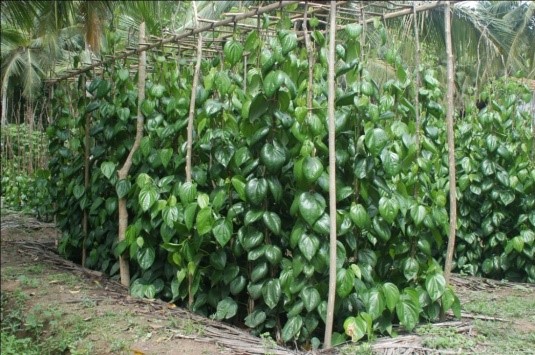
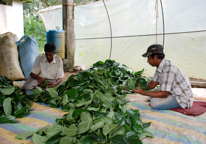
History
Betel is an evergreen, perennial climber widely grown all over the Sri Lanka. The commercial product is the leaf, mainly used for chewing with Arecanut, slaked lime, tobacco and some other ingredients. Betel chewing habit in Sri Lanka goes dates back to 340 B.C and during that time betel was a prestigious item used by the prestigious society of the country. The origin of betel is believed to be in Malaysia or in surrounding East Asian region and it is said to have been introduced to Sri Lanka and other South Asian Countries by Chinese and Arab merchants. However, over ten wild relatives of betel are found in Sri Lanka.
Today betel is grown for local consumption and exports and Major betel growing countries are Sri Lanka, India, Thailand and Bangladesh. Pakistan is the major importer of Sri Lankan betel.
Products and Uses
The
leaves of this plant have a higher economical and medicinal value but
from ancient times it has been mostly used for chewing purposes and
ceremonial events along with other condiments. This chewing combination
in the form of a betel quid could be varied with different ingredients
from country to country.
Several value added products from betel has
been formulated and those include betel mixed mosquito repellent coils
and cream, toothpaste, mouthwash, shampoo, face cream, instant betel
quid and pellets.
Major Growing Areas
Betel is grown in all over the country but the commercial production of export quality betel, with bigger leaves with dark green colour combined with thickness, known as “Kalu bulath” is significantly confined to few districts such as Kurunagala, Gampaha, Kegalle, Kalutara and Colombo.
Varieties
“Maneru”, “Ratadalu”, “Galdalu” and “Metipala” are available types of betel in Sri Lanka. Among them “Maneru” and “Ratadalu” are commercially cultivated. Using above betel types and other available accessions, two high yielding varieties were released. Two varieties were named as “Narammali” and Naramrathi”. Specific characteristics of these two varieties are as follows;
- Narammali –
- Leaf characteristics
- Length : 25cm
- Width : 19cm
- Weight : 8g
- Colour : Dark green
- Leaf yield per vine at one harvesting : 50 – 60
- Leaf % with export quality : 80
- Leaf yield (Export quality) /Year / 1000 sticks : 1,200,000
- Naramrathi –
- Leaf characteristics
- Length : 26cm
- Width : 17cm
- Weight : 8g
- Colour : Light green
- Leaf yield per vine at one harvesting : 60 – 65
- Leaf % with export quality : 75
- Leaf yield (Export quality) /Year / 1000 sticks : 1,050,000
Soils and Climatic Requirements
Soil
Betel
can be successfully grown in well-drained, fertile soils in wet to dry
climatic zone of Sri Lanka. Especially the lataritic and clay loam soils
in Kurunagala and Gampaha districts are highly suitable for betel
cultivation. Waterlogged, saline or alkali soils are not suitable for
the growth of betel.
Climate
Well-distributed annual rainfall enhances the growth of betel vines.
Betel
is a sun loving plant but produces better quality leaves in the wet
zone and intermediate zones rather than in the dry zone. Appropriable
shade levels and irrigation are essential for successful cultivation of
the crop. Hot dry winds are harmful and retard the growth of the vine.
Crop Establishment
Planting material
Betel is usually propagated by using stem cuttings. Cuttings should be healthy and taken from mother vines with high yielding and leaves are comparatively bigger and dark green in colour. Cuttings can directly be field planted or can be planted as rooted cuttings established in poly bags filled with a mixture of equal parts of top soil, cow dung, coir dust and sand.
Field Planting
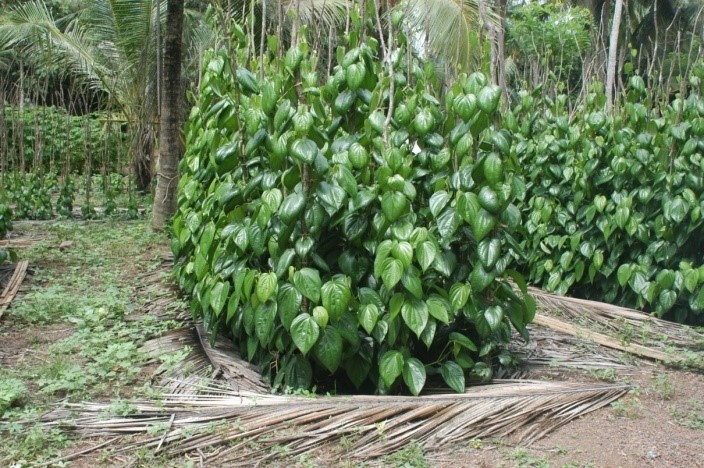
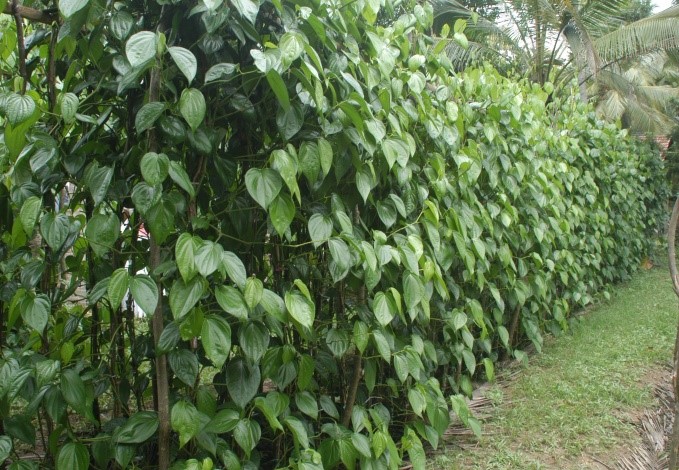
Betel
is usually planted in sunken beds. The field should be flat, well
drained and with good sun shine. The field should not have a betel
cultivation infected with Bacterial Leaf Blight at least for 2 years.
After the land preparation, beds, usually in the size of 1.2mx7.5m, are
prepared. Bed size can vary with the space available. Adequate spacing
should be left between beds to allow management practices and to control
the spread of disease. Beds should be sterilized by burning straw or
ash on it. Around the cluster of beds a drainage canal of 30cm width,
60cm depth should be built. An artificial live or dead support should be
provided to betel for upright climbing. Supports, called as stakes,
are established in the beds at the spacing of 45cmx 45cm. Two cuttings
are planted near a stake. Before planting, cuttings should be immersed
in a fungicide mixture for about 2 minutes. Instead of beds betel can be
established as single plants. Cuttings are planted in 30cmx30cm pits,
filled with top soil and cow dung mixture, and stakes of 2-4cm diameter
should be established as supports. The spacing between plants is
1.8×1.8cm. Either live supports of Gliricidia sepium or durable dead wood support can be used.
Beds
should be covered with coconut fronds or other shading material for
about 4-6 weeks. Beds should be watered once or twice daily. Sprouting
from cuttings starts within 20-45 days and after that shade should be
removed gradually.
Crop Management
Fertilizer Application
Betel leaves are picked once in every 3-4 weeks and with that substantial quantity of nutrient is removed from the field. Therefore application of chemical fertilizer is essential for higher yield and better growth.
Fertilizer recommendation
Urea 195g
Triple Super phosphate 65g
Muriate of Potash 100g
Keserite 60g
420g of above mixture should be applied to 100 betel vines in every three weeks intervals.
Organic fertilizer
Initially
cow dung or compost should be applied to the bed after about one month
and it should be mixed well with soil without damaging to the newly
planted cuttings. Well composed poultry manure or goat manure can also
be used for betel. Application of decomposed Glyricidia leaves is highly
beneficial for better growth and higher yield.
Pruning and Training
It
is generally trained either to live supports or dead supports but
concrete post or coir ropes can also be used as substitutes.
- Pruning at 1m height of the betel vine is preferred to increase the plageotropic branches and yield.
- After 1.2 m growth of the betel vine Trellis is established.
Crop Protection
Diseases
Bacterial Leaf Blight
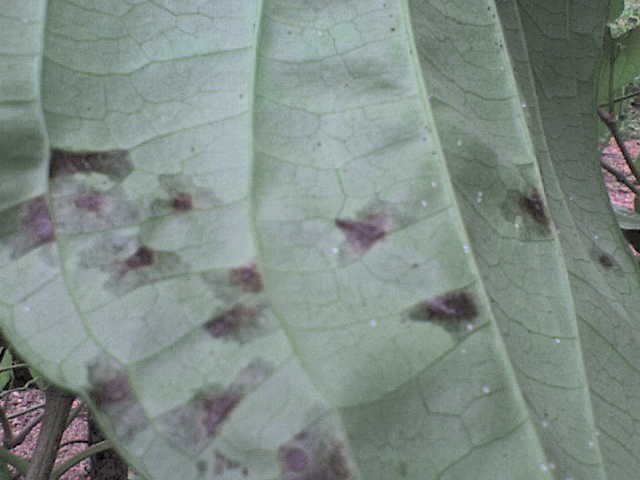
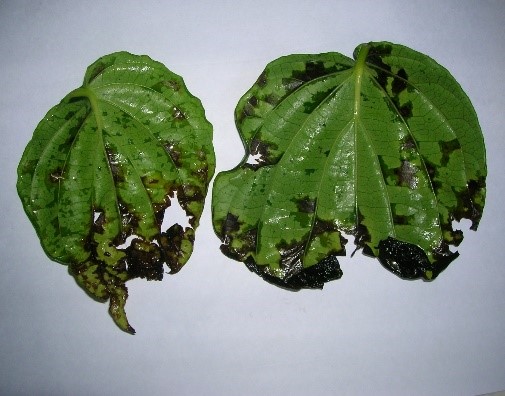
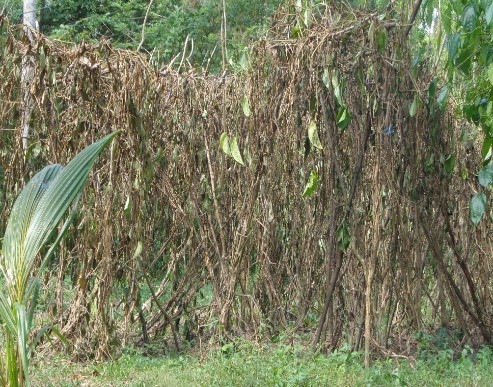
Betel leaf blight is caused by bacteria, called Xanthomonas campestris betlicola. Disease becomes epidemic during rainy seasons. First characteristic symptom is moist oily patches on underneath of leaves. Gradually they spread and turn into brown or black in colour. When the condition is serious these patches can spread to the stem resulting of shedding leaves and nodes. Consequently the plant will die but the disease can easily spread into surrounding vines. No control measure has been identified other than destruction of seriously diseased plants. Diseased plants and nearby plants should be burned on the spot. A fungicide can be applied to control the spread. All matured leaves of remaining vines should be removed and a fungicide should be sprayed once or twice to betel vines. The spread of disease can be controlled by lowering the application of chemical fertilizer and water for infected betel plots. Use of disease free planting material, use of an agro well or an isolated water source for irrigation and adhering to strict hygienic practices are important ways to avoid contamination.
Foot rot disease
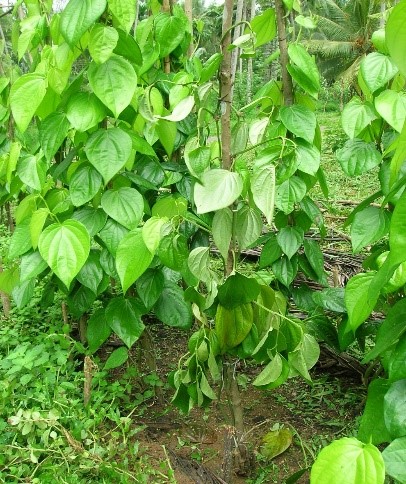
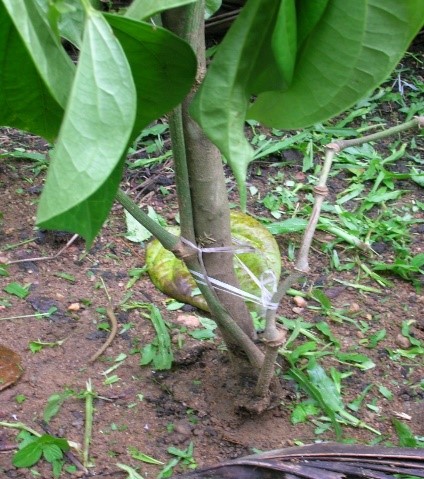
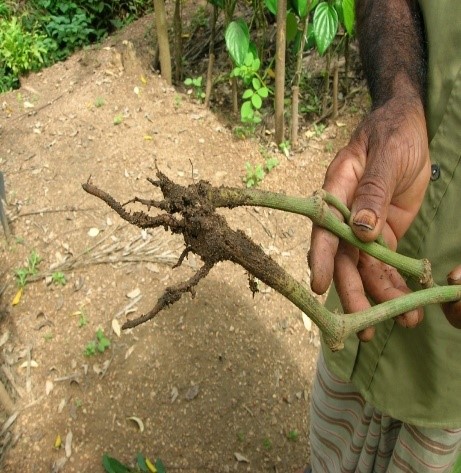
Foot rot is caused by fungus, called Phytopthora, Coletotricum and Rzoctoniya. Disease may become epidemic in clay soils. First characteristic symptom is withering the betel vine. When uprooting the betel vine, we can see a blackish colour dried roots. Gradually they spread nearby betel vines.
A fungicide can be applied to the base of the vine after the watering betel bed. Secondly 1:1 ratio of cow dung and top soil should be applied to the base of the betel vine for covering the first and second nodes of the betel vine. It enhances the growth of young roots in basal nodes.
Brown spots of betel leaves
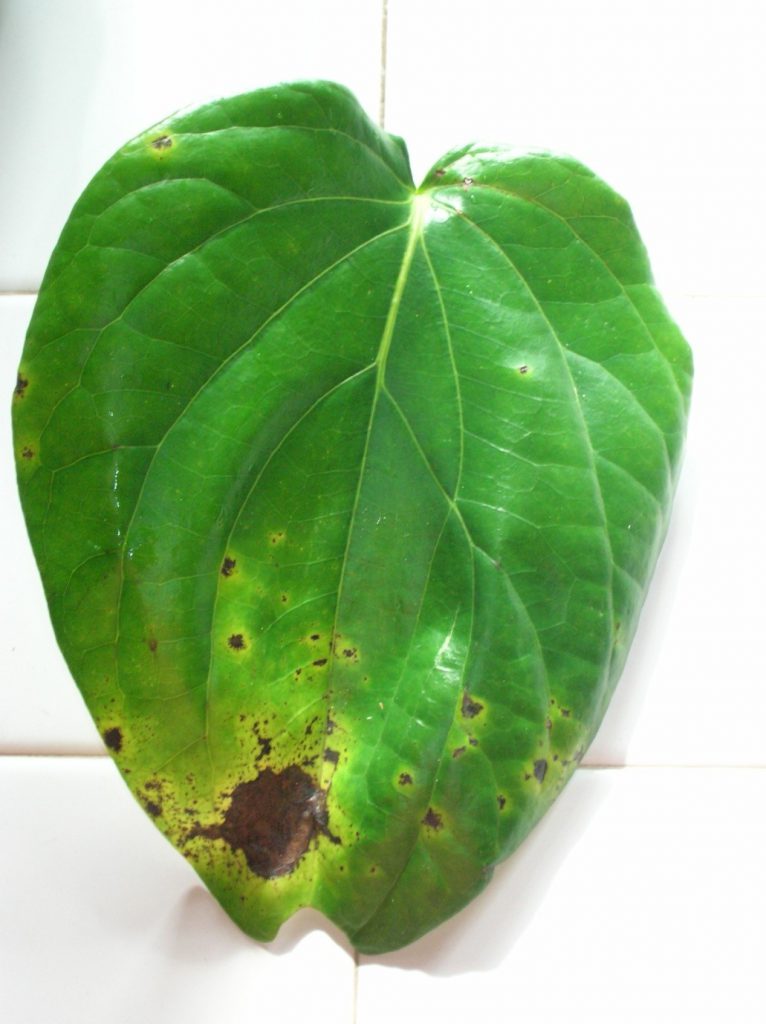
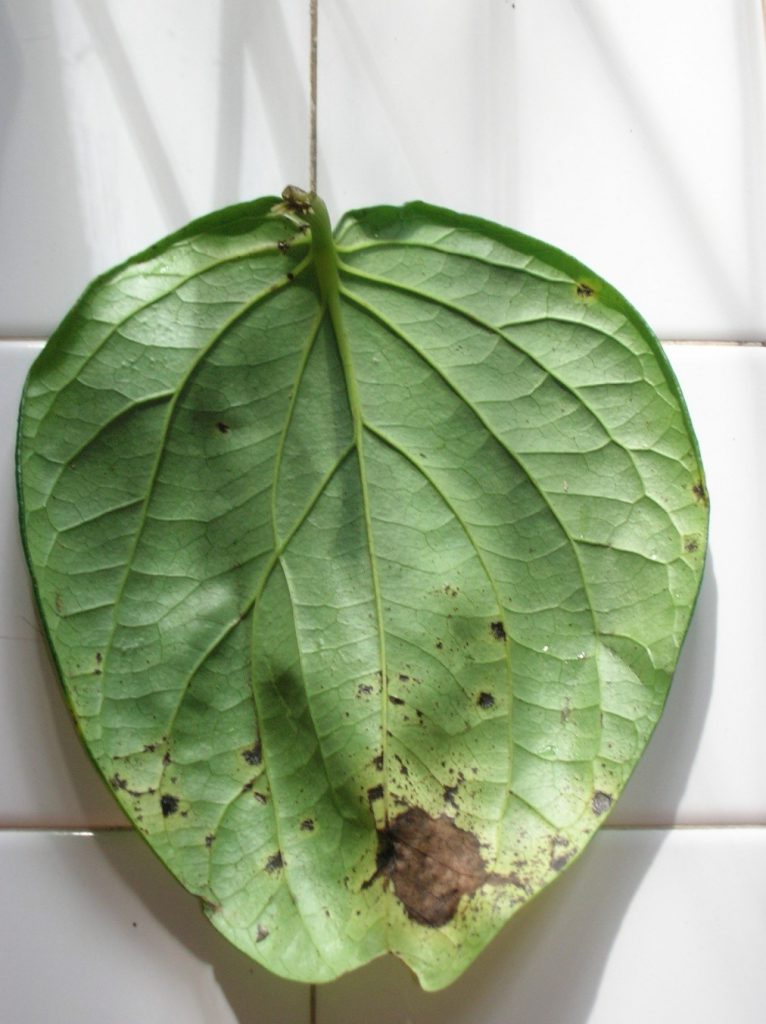
Brown spots are caused by fungus, called Phytopthora, Coletotricum and Sercusphora. Disease may become serious when neglecting the emergence of the disease. First characteristic symptom is browned patches with yellowing margins. Spreading disease can be managed by removing the diseased betel leaves. If the disease become severe application of fungicide can be recommended. All matured leaves of betel vines should be removed and a fungicide should be sprayed once or twice to betel vines.
Nematodes attack
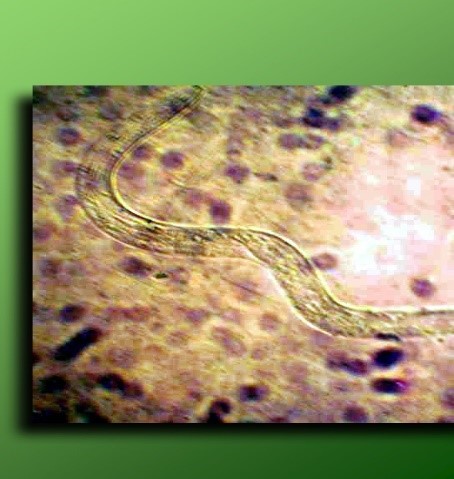
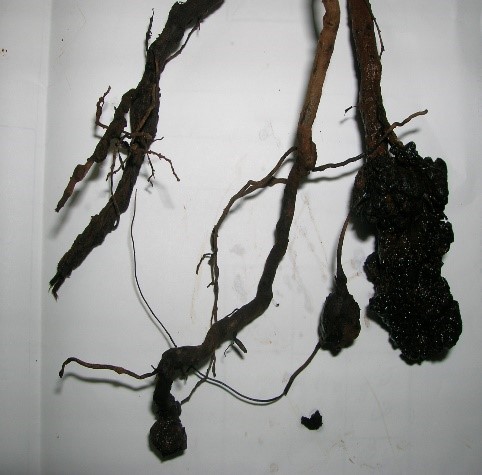
Occasional death of betel vines in a plot can be observed in some betel cultivations. Main reason for such situation is due to nematode attacks. Nematodes attacks to root system and cause partial destruction but secondary attacks of fungus and bacteria cause foot rot and destruction of root system causing to consequent death. This is not often appeared.
Pests
No economically important pest problems are reported but insect damages by suck sapping insects and damage s of red mites to betel leaves are commonly found in betel cultivations.
“Kalamadiri” haniya
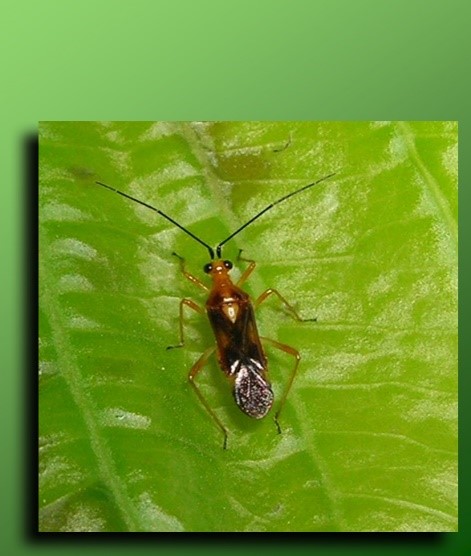
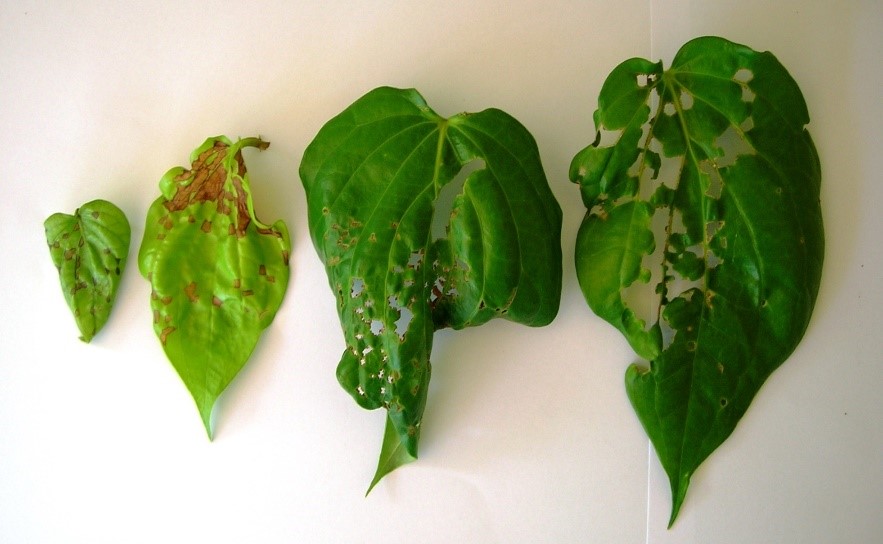
Damaging insect is Dispinctus politus. Good cultural practices help to control the insect damage.
Two spotted red spider mite damage
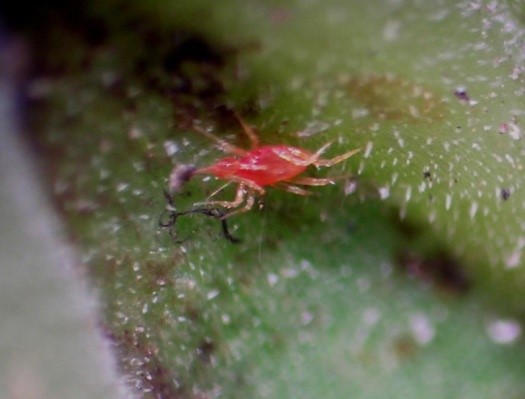
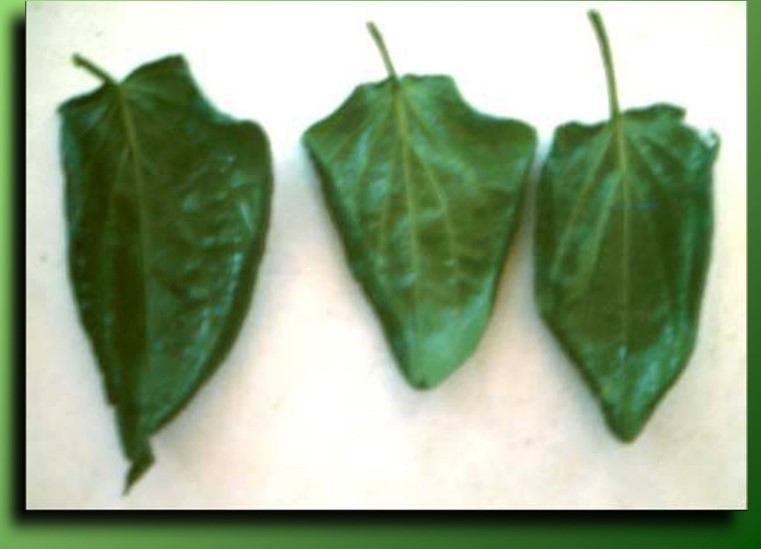
Damaging insect is Tetranychus urticae. Damage symptoms are rolling the margins of leaves and beaked in to small particles when striking leaves. If the damage is severe miticide application is recommended after removing all matured leaves of betel vines.
Harvesting and Post Harvest practices
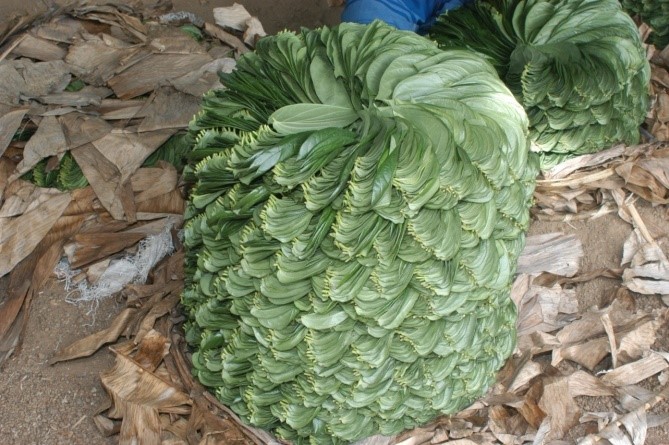
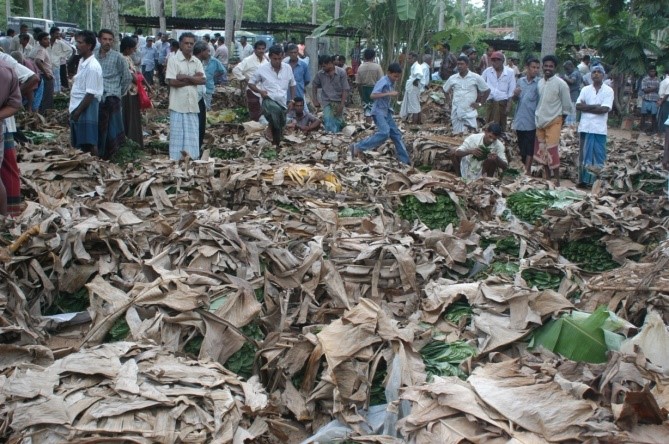
Harvesting is started when the betel vine is grown up to 1.2-1.8m in length. Initially matured leaves (Kanda kola) are removed in lower parts of the main stem 2-3 times. After that betel leaves are harvested both from main stem and lateral stems. For export market betel is harvested from three weeks intervals and for local market in two weeks intervals. Harvested betel leaves are bundled, having 40 leaves for each, before sending to the market. For export market those bundles are packed in specially prepared cane baskets.
Medicinal and Chemical Properties
The important constituent of the betel leaves is a volatile oil. Some of the major compounds identified in Sri Lankan betel oil are β-phellandrene, 4-terpinol, eugenol, chavibitol acetate, safrole and allylpyrocatechol diacetate.
Standard quality specifications
There are no specific quality parameters for betel. But for export quality betel following criteria is considered,
Size of the leaf – At least 20cm in length and 15cm in width
Color – well matured dark Green color leaves
High pungency
Freshness of the leaves
Stem of the leaf must be 2.5-3cm